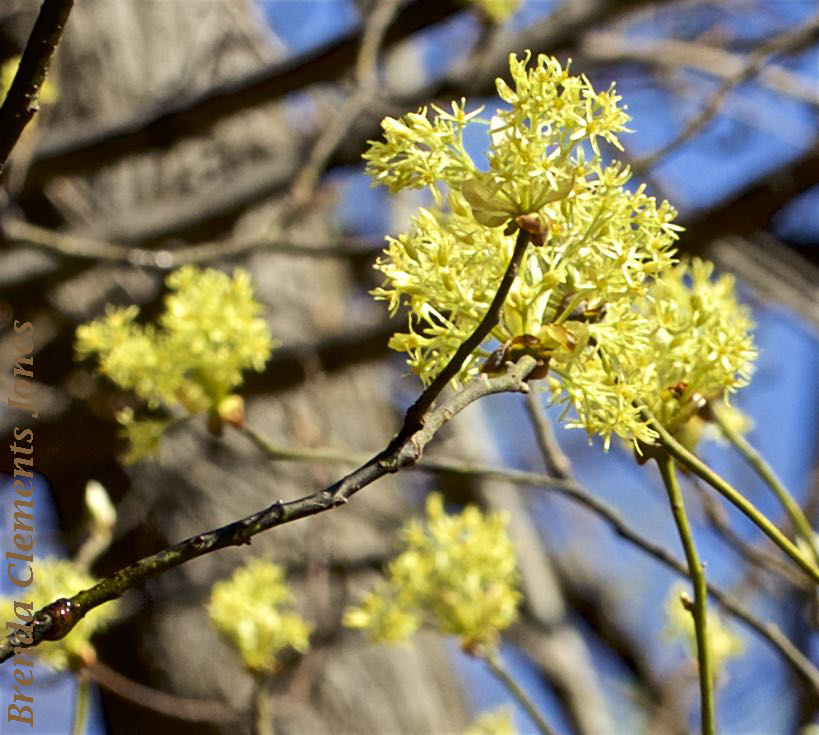
Seems winter has given up. Spring has won the battle of the seasons and is stepping through the woods. Right now, mid-April, Sassafras Trees (Sassafras albidum) are in bloom throughout the woods of the Blue Ridge Mountains in central Virginia. Creating a soft watercolor wash of pale yellow.

Sassafras is a dioecious tree, meaning any Sassafras tree that you may come upon in the woods or in your yard is either a female tree or a male tree. Each individual tree’s flowers in turn are either female flowers or male flowers. The blossoms in the image immediately above are female flowers. Each female flower is very small at about one third inch across. Each has six sepals, an elongated central pistil and six small sterile stamens.

The male flower to my eyes looks like a busier flower. These are male flowers in the photo above. Each little flower, one third inch across, consists of six sepals and nine stamens with yellow anthers.

Going from tree to tree, the flowers are pollinated by various bees, flies, sawflies, beetles and wasps. Fertilized female flowers produce oval drupes. A drupe is also known as a fleshy fruit with thin skin and a central stone containing the seed. Drupe is easier to say.

When the drupes are ripe, reaching a deep blue-black color, seated on a pedicel that appears to be a rich red goblet, songbirds, Wild Turkeys, and Bobwhites enjoy the buffet and spread seeds through the woods. Bringing us more gorgeous Sassafras Trees.

4 responses to “Sassafras Trees Are Dioecious”
“a soft watercolor wash of pale yellow.” Poetry pure and simple. thank you so much for your observations and fine knowledge of how to develop your observations across the spectrum required of the naturalist for grasping the sensual and scientific joy of our geography.
Ken, thank you so much for your very kind words. I love sharing the world of nature and this is my way.
Thank you so much for your continuing support and for reading my posts.
Bren
I’ve heard of Sassafras large enough to be made into lumber ( and for musical instruments), but have never seen one of that size. And I’ve never laid eyes on the flowers and fruit either. A lot I don’t notice about a plant that is everywhere and so easy to recognize. Thanks for all your information, especially over the last few weeks!
Hi Bruce,
I don’t know how I came to realize that the BIG Sassafras Trees were actually that species, after all those telltale leaves are so FAR UP! The flowers and fruit are another story since there are small trees along my lane. Trees of just 5 or 6 feet. Easy to see and notice if one is prone to noticing. I do have to admit that I didn’t notice right away!
Thanks so very much for reading my posts!
Bren